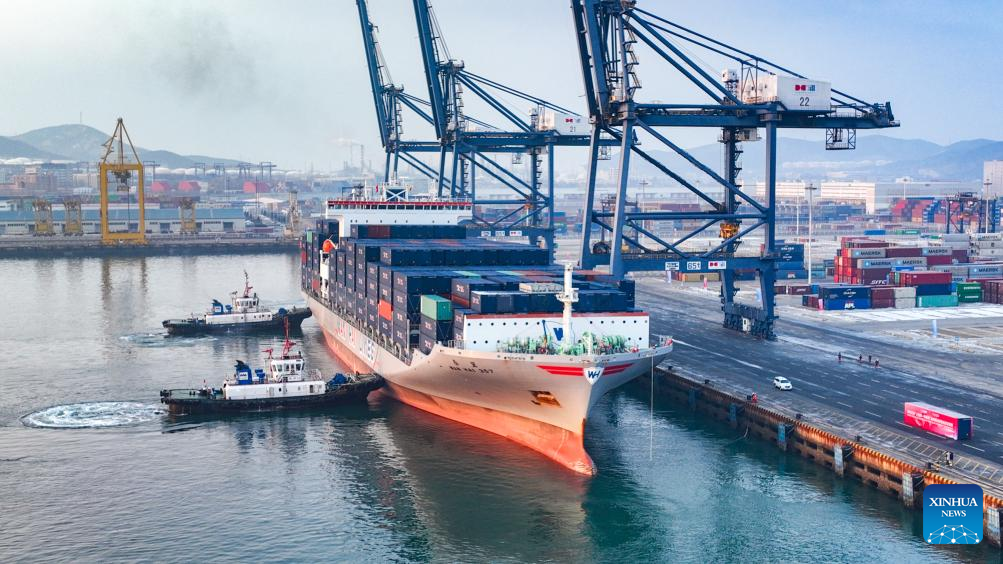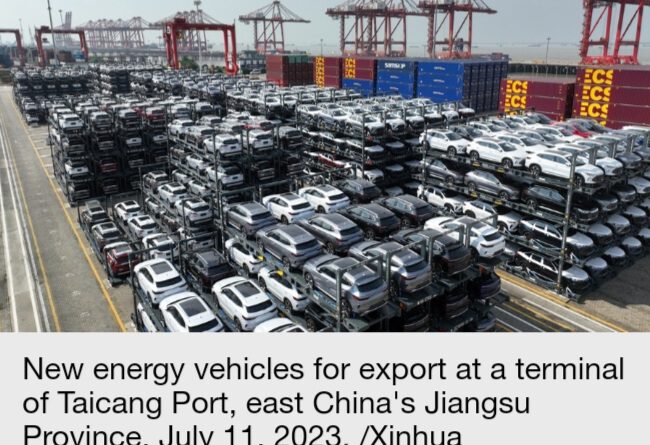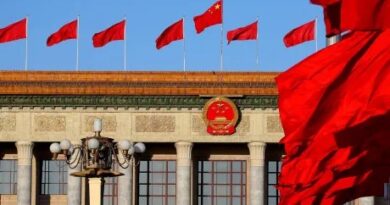The deep integration of China with the global value chain
Editor’s note: In the current global economic environment, China’s economy has demonstrated its resilience and potential. How should the developing trend of China’s economy be viewed? In what ways are the advantages of China’s economic development reflected? Global Implications of China’s Economic Growth is a five-part series examining the questions given. The fifth article focuses on the integration of China’s economy with the world. Liu Chunsheng, a special commentator on current affairs for CGTN, is an associate professor at the Central University of Finance and Economics in Beijing. The article reflects the author’s opinions and not necessarily the views of CGTN.
In recent years, China has played an increasingly important role on the global stage. With its strong growth momentum and significant contribution to global economic expansion, China has become a vital engine of global economic growth.
In 2023, China’s contribution to global economic growth continued to exceed 30 percent, further solidifying its position as a major driver of the world economy. The International Monetary Fund recently revised its growth expectations for the Chinese economy in 2024, indicating that China’s economy may surpass previous projections. This positive outlook is not only beneficial for China but will also have an impact on the overall economic growth of the world economy, particularly for emerging economies in Asia. It is estimated th8at the overall economic growth rate of emerging economies in Asia will reach 5.2 percent this year.
With a population of over 1.4 billion, China provides a vast consumer base that drives demand and boosts corporate revenues. The growing middle-income group, increasing disposable incomes, and changing consumption patterns further enhance the attractiveness of the Chinese market. That’s why, as RBC Wealth Management reported, “China’s domestic market is too big to be ignored by multinational corporations.”
China plays a crucial role in the global industrial and supply chains. It has become the manufacturing hub of the world, attracting foreign direct investment and leveraging its competitive labor costs, advanced infrastructure, and skilled workforce. China’s unique manufacturing capabilities and efficient supply chains make it a key component in numerous global industries.
As the world’s largest exporter, China has established extensive trade networks with countries worldwide. Projects under the framework of the Belt and Road Initiative (BRI) promote connectivity and strengthen economic ties with partner countries. This strategic positioning allows China to play an important role in shaping the global trade landscape and promoting economic cooperation.
This can be shown by the fact that the total import and export volume between China and BRI participating countries, between 2013 and 2022, reached $19.1 trillion, with an average annual growth rate of 6.4 percent. Over that timeframe, the total bilateral investment between China and the BRI countries surpassed $380 billion, with China contributing in excess of $240 billion.

A container ship named “WAN HAI 357” berthing at the Dalian port in northeast China’s Liaoning Province, January 2, 2024. /Xinhua
Furthermore, China is committed to technological innovation and industrial upgrading to drive its transition towards high-value-added industries. By focusing on advanced manufacturing, artificial intelligence, and green technology, among other areas, China aims to enhance competitiveness, attract more investment, and drive long-term economic growth.
In 2024, during the “Two Sessions” in China, the country set its economic growth target for the year at 5 percent. This target highlights China’s determination and efforts to maintain steady growth. As an important engine of global economic growth, China’s economic expansion has significant implications for the global economic landscape and markets.
China will continue to deepen its reform and opening-up in 2024, including measures to further ease market access, optimize the business environment, and strengthen intellectual property protection. These reforms will enhance the attractiveness of the Chinese market and provide more opportunities for businesses from around the world.
China has become one of the most critical hubs in the global value chain. With its vast labor force and advanced manufacturing capabilities, China has attracted numerous multinational companies to establish their production bases in the country. By participating in the global value chain, China has strengthened economic ties with other countries and contributed to global trade and economic growth.
Chinese companies are pursuing new global strategies. With the improvement of their strength and competitiveness, they have begun actively seeking overseas markets and investment opportunities. Chinese companies have a competitive advantage in areas such as technological innovation, green development, and digital transformation. Through cooperation with international partners, they have contributed to the development of the global economy.
For example, Chinese investments and innovation activities in fields such as 5G technology, artificial intelligence, renewable energy, and electric vehicles have garnered global attention. Through collaboration with international companies, Chinese enterprises have strengthened technology exchange and sharing, promoting the upgrading and coordinated development of the global industrial chain.
The deep integration of China with the global economy reflects China’s role as a major participant in the world. As China’s economic growth exceeds expectations, its importance as a major driver of global economic growth becomes increasingly evident.
China’s sustained economic growth has significant spillover effects on emerging economies in Asia. China’s strong demand for raw materials, goods, and intermediate products from neighboring countries promotes regional trade and stimulates economic development. Additionally, the BRI has brought new investment opportunities and infrastructure projects to Asian countries, enhancing connectivity, and promoting economic integration among Asian nations.
The increasing number of consumers and the trend of consumer upgrading make the Chinese market a focal point for global brands. Companies in various industries seek growth and opportunities in the Chinese market by adapting to the needs of Chinese consumers and providing personalized and high-quality products and services.
In conclusion, China’s economy has deeply integrated with the world. Its development is inseparable from the world, and the world’s development also needs China. China provides impetus and stability for the global economy, and shares developmental opportunities with countries around the world.
(If you want to contribute and have specific expertise, please contact us at opinions@cgtn.com. Follow @thouse_opinions on Twitter to discover the latest commentaries in the CGTN Opinion Section.)



